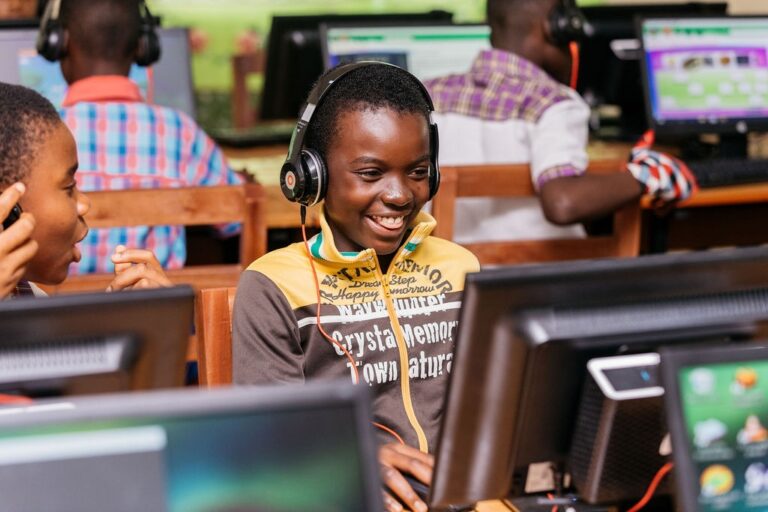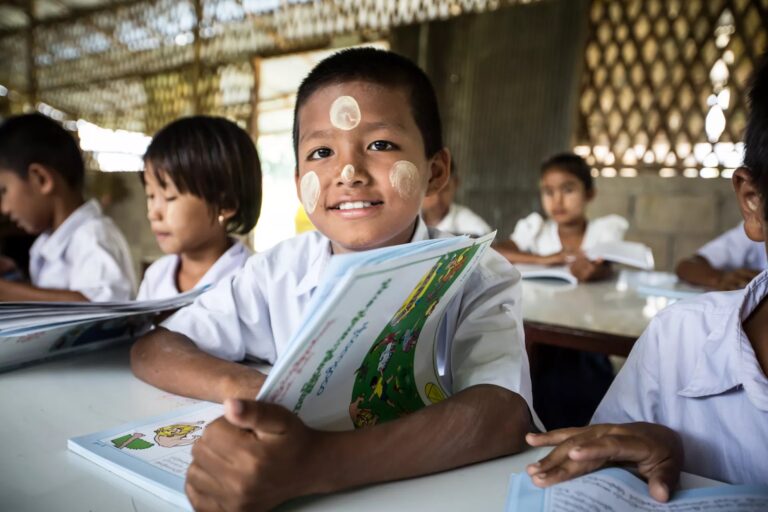There needs to be more debate in terms of private intervention in public education among stakeholders including the donors.
On January 22, George Weah, former soccer star, will be sworn in as the President of Liberia. For the generation that grew up in the civil war, Weah symbolizes hope, as well as hard work. Weah’s road from rags to riches—from slums of Monrovia to becoming top player of a dominant AC Milan soccer team and the president of his country—is really ‘movie-like’ as described by one of his former coaches.
When Weah lost the presidential election in 2005, he had a revelation—he had everything, yet he lacked in ‘values’ that he believed should be the cornerstone of new generations of Liberians to prosper. Weah went to university to make up for educational and intellectual values. His recognition and adoption of the Gandhian principle ‘becoming the change you want to see’ went a long way towards him eventually becoming the president on his third try.
Weah’s story is inspiring. Maybe, our leaders too can be blessed with such revelations. Unlike Weah, they haven’t gone to universities, but have recognized education to be a powerful tool in combating two epidemics of a developing country like ours—human insecurity and human poverty. Article 31 of our Constitution under right to education, provides every citizen free education up to the secondary level. In the recent elections, all political parties stressed greater governmental responsibility in education.
Big budget, small result
Greater responsibility is only possible with a greater budget. There is always dissatisfaction across academic arenas regarding the insufficient educational budget. But it’s also important to dwell on whether the previous budgets have brought about desired results. The answer is no. For a long time now, education budget hasn’t been allocated well, and community schools, in general, are in shambles.
The last 10 to 15 years of SLC results show the passing rate to be 25 percent among students in community schools. That is a lot of failures considering two-thirds of all children in Nepal attend those schools. Over 90 percent of students fail in Mathematics, English, or Science indicating their shortcomings in both literacy as well as numeracy.
While the education budget increased from Rs. 86 billion (2014/15) to 98 billion in 2015/16, the number of failures in SLC increased from 240,525 to more than 270,000.
The 2016 Education Amendment Bill changed the assessment system but didn’t address the real issue: quality inside the classroom, or lack thereof. Experts have lamented, with passing grade lower now than before, the new assessment policy is likely to deteriorate students’ performance and maybe even motivation. Unfortunately, in our country, the government has been funding the schools, not students.
How free?
Institutional schools have flourished because they have held themselves accountable to their ‘service’ seekers—students and parents—by providing quality education. The passing rate in the last decade or so for students at institutional schools has been more than 80 percent. With decreasing enrollment at community schools, demand for institutional schools is going to be greater in the future. In that consideration, it’s appropriate to debate how really ‘free’ the market education is.
Some laissez-faire exponents would argue that the market education is not free in two significant ways: firstly, the government sets the ‘price-ceiling’ for institutional schools; and secondly, institutional schools are subject to nationalized examination. If Private and Boarding School Organization (PABSON) had its own examination system, SLC would test students of community schools only, and the comparisons with institutional schools would not come about. Ironically, implementing the same curriculum and examination at both community and institutional schools defeated the very purpose for which it was conceived. That utopian dream of ‘educational egalitarianism’ could be achieved, remains a dream still.
The fact that many elite schools get away with not abiding by the ‘price-ceiling’ suggests the rent-seeking at the governmental level. With budget/ low-cost schools becoming a successful phenomenon in many developing countries including Nepal, price-ceiling could be rid off, as the ‘invisible hand’ is perfectly at work. As per demand, students can choose budget or elite school and the parents vote with their wallet to satisfy the demand. Ridding price-ceiling would also rid rent-seeking.
Some time ago in this space (see “Rich schools, poor students,” Republica, Nov 20) I shared some findings of a research I had conducted in institutional schools. I had argued one of the reasons, students of institutional schools don’t have many cognitive abilities, is because they have adhered to the ineffective and stagnant governmental curriculum. Nonetheless, institutional schools have shown significant advances in terms of literacy and numeracy among their students compared to community schools.
Private intervention
Given the wretched state of most community schools, institutional schools will no doubt take on more responsibility in providing quality education. More institutional schools will spring into existence along the supply side, as there are demand and money to be made. The profit is what drives the private sector resulting in quality education.
Providing free education till the secondary level is wonderful, as long as it empowers the students. However, the sheer number of failures and drop-outs each year suggest that students have been rather viewed as mere receptacles of charity. The government can do better. It can do that by ‘privatizing public education’ as suggested by Milton Friedman. Freidman suggested ‘taxpayer-funded but privately run’ public schools in America at a time, when public schools there were in disarray.
The ‘school voucher’ has been tested in Nepal, albeit very haphazardly. School vouchers have been successful in developing countries around the world. The challenge of school voucher is in rural areas that are heavily dependent on community schools. There are no institutional schools within a reasonable distance, where a child can redeem his voucher. In such areas, the government could encourage bids from private sector for providing quality education. Given that almost 90 percent of education budget is spent on salaries and administrative costs, the competitive private sector teachers who are more committed to providing quality education can achieve much better outcomes.
That’s where the difference lies. The performance of community schools isn’t linked with the funding. So teachers don’t ever fear being out of work. Additionally, unnecessary and excessive salary increments with implementation of previous SSRP and the concurrent SSDP have made them uncompetitive. On the contrary, institutional schools that don’t perform go out of business, and the teachers perhaps out of job. It’s a well-known fact that teachers make less money at institutional schools than community schools.
Never in our country’s history, has there been a better opportunity for developing intellectual, cultural, and spiritual potentials of each student than now. The private sector has seized on that opportunity, but unfortunately, the government hasn’t.
At the governmental level, there needs to be more debate in terms of private intervention in public education, among stakeholders including the donors. The government needs to be realistic in assessing if community students would be better off with private sector intervention. Maybe, the school voucher needs to be tested comprehensively.
Simultaneously, empirical studies can be conducted on outcomes of schools with and without intervention. And if the outcome is what I think it will be, then yes, definitely, the community students would be better off with the intervention.
The author is associated with Harvard Kennedy School’s ‘The Center for Asia
Leadership’ (CAL)



![[Preliminary Report] CRNA Collaborative Research for Exploring Factors Nurturing"Happy and Resilient" Children among Asian Countries](https://equity-ed.net/wp-content/uploads/2024/09/1725672182698.jpg)


